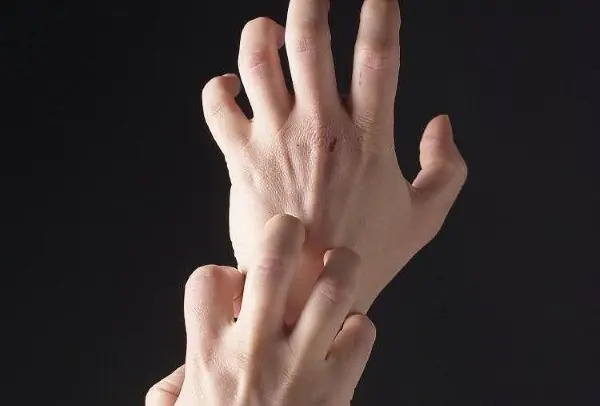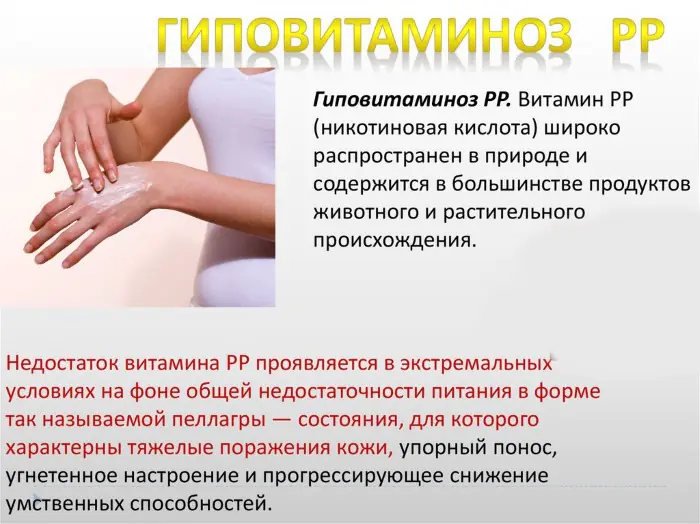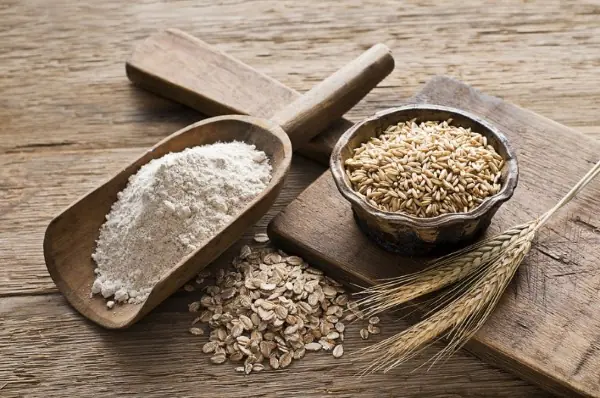Almost every woman has encountered the problem of redness and dry skin on her hands, despite many care products. Often this phenomenon is also accompanied by unpleasant sensations, which can only be gotten rid of by eliminating their cause.
Signs of dry hands
Redness on the hands and dryness are signs of a lack of moisture in the surface layer of the epidermis. This layer contains a small amount of water, and if the humidity level is insufficient, the underlying layers of skin begin to actively evaporate moisture.
Subsequently, metabolic processes slow down, and the skin becomes dull and vulnerable. The epidermis on the hands dries out faster than on other parts of the body due to less subcutaneous fat.
Signs of dry skin on hands:
- feeling of skin tightness;

- frequent damage from the slightest impacts, peeling of scales;
- dull shade of the dermis;
- the occurrence of painful cracks;
- attacks of itching and irritation accompanied by scratching;
- the appearance of reddened areas;
- rough and inelastic skin;
- dryness around the nails and rough cuticles;
- roughness.
Causes of redness and dry skin on the hands
Many factors directly affect the condition of the skin of the hands. This includes compliance with hygiene rules, the level of immunity, and lifestyle.
The main causes of dryness and redness of the epidermis on the hands include:
- the influence of unfavorable environmental factors (scorching sun or frosty weather, dry and windy climate, air pollution);
- use of inappropriate hygiene products, as well as frequent hand washing with hot water;
- cleaning with detergents without gloves;

Redness on the hands and dryness may occur after cleaning without gloves. Therefore, it is recommended to purchase these to keep your skin healthy.
- unhealthy lifestyle and metabolic disorders in the body;
- constant use of heating appliances or air conditioning in unventilated areas;
- result of taking medications;
- frequent stressful situations;
- allergy;
- insect bites;
- aging of the body.
Redness on the hands and dryness are also symptoms of various diseases.
These include:
- Eczema: acute or chronic inflammatory disease accompanied by rash, itching or burning. The skin appears thickened and inflamed.
- Contact dermatitis: the result of the influence of an irritating substance on the dermis, causing allergic manifestations. The skin becomes red, swollen, and blisters may form.
- Hives: a condition of the epidermis characterized by the presence of itchy reddish formations. It is quickly detected and goes away within a day.
- Scabies: a parasitic disease caused by a microscopic mite and accompanied by severe itching. It appears as redness and rash between the fingers, as well as in areas with thin skin.
- Skin fungus: a disease caused by different types of fungi. Manifests itself in the form of red pimples and peeling. Nail fungus may develop.
- Lichen planus: a chronic disease that affects the dermis and mucous surfaces of the body. The formation of small dark red nodules merging into plaques is characteristic.
- Candidiasis: a disease caused by yeast. There is itchy redness of the skin with a white coating between the fingers.
- Hypothyroidism: the state of the body with a reduced level of iodine-containing hormones. Dry skin, drowsiness, and swelling of the extremities are observed.
- Psoriasis: a skin disease that appears due to disruptions in the nervous and endocrine systems or problems in the body's metabolic processes. The skin dries out and becomes inflamed, begins to swell and peel.
- Diabetes: changes in the metabolic process due to lack of insulin. May be accompanied by dryness in the folds of the dermis.
- Herpes: viral infectious disease. It is characterized by the appearance of itching and rash followed by the formation of small blisters.
- Hypovitaminosis A and PP: lack of these vitamins in the body. Manifests itself in general dryness and flaking of the epidermis.

- Sjögren's disease: connective tissue lesions characterized by exocrine glandular and extraglandular manifestations. Dry skin, blurred vision, and stomatitis are observed.
Medicinal ointments and moisturizing creams against redness, flaking and dry skin of the hands
Ointments and creams for redness and irritation of the skin must be in your home medicine cabinet in order to provide prompt assistance to reddened and flaky areas in a timely manner.
List of the most common means:
- "Radevit" - an ointment that has an anti-inflammatory effect and accelerates the regeneration of the epidermis. Relieves itching, softens, and enhances the protective properties of the skin. The affected areas of the hands are treated with an antiseptic, then a thin layer of ointment is applied (1-2 times a day).
- Zinc ointment has an antiseptic effect, reduces inflammation and irritation of the dermis. The product is applied to clean and dry hands up to 6 times a day.

- "Elidel" has a high anti-inflammatory effect. The cream should be rubbed into the affected areas until completely absorbed. Used 2 times a day.
- Ointment "Panthenol" used to treat cracked and rough skin, healing microdamages. The product can be used several times a day, as needed.
Ointments against viral and fungal skin lesions on the hands and between the fingers
If herpes rashes appear on your hands, Acyclovir, Zovirax or Herpevir ointments will help reduce itching and burning, as well as speed up healing. The product is applied using a cotton pad every 4 hours.
For fungal diseases of the dermis, the use of Candide cream is indicated, which reduces the proliferation of bacteria and the development of fungi. A thin layer of cream is rubbed into clean, dry skin 1-3 times a day.
The antifungal drug Lamisil is also widely used. The method of use is similar.
Cosmetics against dryness and flaking
Cosmetic antioxidant cream "Librederm" perfectly solves the problem of dry and rough skin on the hands. thanks to the content of vitamin E and allantoin. The cream eliminates the feeling of tightness, irritation disappears and the protective properties of the skin are restored. Use as needed and is quickly absorbed.
Hand cream “Nivea” (Nutrition and Care) perfectly softens hands, smoothes out unevenness and improves the tone of the epidermis. A small amount of product is enough for quick results.

"Decleor" is a cream containing extracts of medicinal herbs. Rescues chapped and dry hand skin and also reduces the first signs of aging. Quickly softens and moisturizes the skin.
Salon procedures for the treatment of dermatological diseases on the hands
There is a range of different procedures for the treatment of dermatological diseases:
- Laser therapy: used for allergic manifestations, fungal diseases, to weaken local inflammatory processes. Laser radiation has analgesic, vasodilating, and muscle relaxant effects. The course consists of 12 sessions, repeated procedures are possible no earlier than after 3-4 weeks.
- To enhance the effect of drugs in the treatment of skin diseases, it is used electrophoresis. To carry out a physiotherapy procedure, a pad soaked in medicine and an electrode through which an electric current is applied are placed on the affected area of the skin. The course of treatment consists of 10-20 procedures, which are carried out daily or every other day. There are contraindications for damaged skin.
- UHF therapy. The properties of ultra-high frequency current are used for treatment. The procedure has a bactericidal effect, stimulates the protective properties of the epidermis, and accelerates tissue restoration. The course of treatment includes 5-15 procedures lasting up to 15 minutes.

- Darsonvalization – method of electrotherapy using alternating current. The procedure has an analgesic, antipruritic effect, and improves blood circulation. Session time – 10-20 minutes, full course – 10-15 physiotherapy procedures.
Oil wraps against cracks and itching on hands
You can get rid of redness and dry skin on your hands by using oil wraps. This procedure helps to enrich the underlying layers of the epidermis with nutrients.
Natural vegetable oils containing the necessary vitamins, minerals and enzymes are used for wrapping. Thanks to the influence of biologically active substances, blood circulation improves, metabolic processes are activated, and the elasticity of the dermis increases.
The most effective oils for wrapping:
- grapefruit (saturates cells with oxygen, stimulates blood circulation, smoothes out irregularities);
- geranium (increases skin tone, refreshes);
- orange (eliminates dryness and heals microdamages, suitable for sensitive skin);
- peach (moisturizes aging and dry skin);
- lemon (restores smoothness and elasticity);
- cinnamon (accelerates regeneration, improves the appearance of the epidermis in old age);
- lavender (has anti-inflammatory and healing effects).

The wrap mixture consists of base olive oil and a few drops of active essential oil. Sometimes olive oil is replaced with honey. A thin layer of the mixture is applied to thoroughly cleansed skin, which is covered with plastic film on top.
This creates something like a “greenhouse” effect. After 20-30 minutes, the mixture is washed off with warm water. To obtain a sustainable result, the procedure must be repeated 10-15 times.
Compresses for cracks and itching on hands
Homemade compresses are one of the effective methods of caring for the epidermis of hands prone to dryness. If your hands have cracks and damage, a compress containing oil-based vitamin A will be effective. It is characterized by healing, nourishing properties, and also eliminates irritation.

Before using the compress, you need to steam the skin in a bath with chamomile or St. John's wort.
To carry out the procedure, a piece of cotton fabric is soaked in a medicinal agent and applied to the hands. The top of the compress is covered with film or paraffin paper and left for 20 to 40 minutes.
Gelatin compress increases the elasticity of the dermis and restores its healthy appearance. 3 tbsp. gelatin must be poured with water and wait until it is absorbed. Then the composition is heated, the fabric is soaked in it and applied to the hands. Keep the compress for 45-60 minutes, then wash it off with warm water.
Homemade ointments
If the dermis of your hands is dry and flaky, you can use folk recipes for homemade ointments. For example, a simple mixture that consists of equal parts of ammonia, glycerin and hydrogen peroxide.
This composition gives the skin softness and also has wound healing and analgesic functions.
No less effective is a mixture prepared from one yolk and 6 drops of aloe juice. The resulting ointment is applied once a day to the hands, the period of use is 10-14 days.
Baths for treating cracks and relieving itching
Redness on the hands and dryness can be easily eliminated using baths according to home recipes. For cracked, dry epidermis, it is useful to steam your hands in warm water with soda or sea salt (1 tablespoon per 1 liter).
You can also use the following compositions:
- 2 tbsp. potato starch is mixed in 1 liter of water;
- 3 tablespoons are steamed in 0.5 liters of water. flax seeds;
- 100 g of oats are brewed in 1 liter of water.

Hands should be kept in the bath for 15 minutes. It is advisable to carry out this procedure before going to bed; after this, pat the skin dry and apply a rich cream.
Tips for caring for dry hands
To solve the problem of dry skin caused by a lack of vitamins, you should add green vegetables, whole grain cereals, fatty fish, eggs, dairy products, liver, nuts and rye bread to your diet.
It is recommended to adhere to the following rules for caring for dry skin on your hands:
- Do household work with detergents using rubber gloves;
- use soap containing moisturizing ingredients;
- After washing your hands, dry them gently with a towel;
- in cold weather, do not go outside without gloves, and in hot weather, use sunscreen;
- wash your hands in warm water and then rinse with cold water;
- In the morning and before bed, rub glycerin-based cream into the skin;
- weekly cleanse the upper layer of the epidermis with a scrub;
- do not apply moisturizer before leaving home;
- It is advisable to purchase an air humidifier;
- try to eat right and drink more fluids.

By the appearance of your hands you can judge the general condition of the body, so redness, dryness and irritation on your hands are a reason to devote more time to your health and, in particular, to caring for the skin of your hands.
Video about redness and dry hands
Treatment for dry hands:
Hand baths:
Usually dry skin (xerosis) does not indicate serious problems, but it can cause discomfort and sometimes lead to unpleasant complications.
Fortunately, most cases of xerosis are caused by external factors that are easy to control.
Separately, ichthyosis is a disease associated with extreme dry skin, which disfigures the patient and causes him physical and emotional suffering. Chronic and severe skin problems are a reason to consult a dermatologist.
Causes of dry skin
The main causes of xerosis include the influence of various environmental factors, as well as diseases that disrupt the functions of the skin.
Possible reasons include:
1. Climatic conditions. The skin becomes dry in winter when the temperature and humidity drop. Winter conditions contribute to the worsening of existing skin problems.
2. Central heating and air conditioning. Fireplaces, central heating, and air conditioners without humidification can cause dry skin.
3. Hot bath or shower. Frequently taking a hot bath, especially if a person likes to splash around in the water for a long time, can destroy the lipid barrier of the skin. It is also not recommended to swim in heavily chlorinated pools.
4. Harsh soaps and shower products. Many popular products contain aggressive surfactants (surfactants). These surfactants simply wash away the protective lipid membrane of the skin, causing dryness.
5. Sun rays. Like heat, the sun's rays dry out the skin. UV rays penetrate the epidermis, affecting the deep layer of skin - the dermis. They destroy collagen and elastin, leading to so-called solar elastosis.
6. Atopic dermatitis. This is one of the most common types of eczema and most often affects dry and sensitive skin.
7. Psoriasis. This skin disease is characterized by the rapid growth of rough, dry, dead skin scales, as well as itching.
8. Diseases of the thyroid gland. Hypothyroidism - insufficient thyroid function - reduces the activity of the sweat and sebaceous glands, which leads to dry skin.
Risk factors for dry skin
Dry skin can develop in any person, but the following groups are most susceptible to xerosis:
1. Elderly people.
2. Residents of countries with dry and cold climates.
3. People who like to take hot showers or baths often.
Symptoms of xerosis
Most often, dry skin is a temporary problem that only bothers you during a certain season, but it can last a lifetime. Symptoms of xerosis depend on your general health, age, where you live, and how much time you spend outdoors.
Possible symptoms include:
1. A feeling of tightness of the skin, especially after a bath.
2. Skin is wrinkled and dehydrated.
3. Skin looks rough instead of smooth.
4. The itching is bothersome, sometimes very intense.
5. Peeling of the skin - from slight to severe.
6. Skin cracks, sometimes bleeding and painful.
7. Redness of the skin, usually in limited areas.
In the following cases, it is recommended to consult a doctor:
1. The condition does not improve despite home measures.
2. Dry skin is accompanied by severe redness.
3. Dryness and itching interfere with normal sleep.
4. Ulcers and infected wounds form due to scratching.
5. The skin peels off in large areas.
Diagnosis of the causes of dry skin
Dry skin can accompany a number of skin and internal diseases, so your doctor will need to run some tests to make an accurate diagnosis. To determine some skin problems, sometimes a careful examination is enough, and to determine, say, thyroid deficiency, you need to analyze the level of thyroid hormones.
A list of skin conditions associated with xerosis includes:
1. Follicular keratosis. This condition causes small, acne-like pimples on the arms, legs and buttocks. Numerous pimples give the skin a rough, sandpaper-like appearance. Pimples are usually flesh-colored, but can also be red and inflamed.
2. Ichthyosis. In this unpleasant disease, skin cells form thick, dry scales that look like fish scales. The scales are small, multifaceted, from white to brown. Ichthyosis can cause deep, painful cracks in the palms and soles of the feet.
3. Xreotic eczema. This disease causes dry skin and numerous cracks in the skin. This characteristic skin appearance is described by some people as “dry riverbed” or “cracked porcelain”. The skin is inflamed, itchy and bleeding.
4. Psoriasis. The disease manifests itself as dry, flaking and itchy skin. The skin in the affected areas is reddish and covered with scales resembling dandruff. In severe cases, the disease may be complicated by infection.
Treatment of dry skin, useful tips
In most cases, dry skin can be treated with simple home remedies such as moisturizing after showering. For peeling skin, your doctor may recommend special creams that contain salicylic acid, lactic acid, or a combination of lactic acid and urea.
For more serious problems, such as atopic dermatitis or psoriasis, ointments and creams containing corticosteroids (Celestoderm B, Elokom, Advantan) can be used. If an infection occurs due to constant scratching or poor hygiene, the doctor may prescribe combination products that also contain antibiotics (Celestoderm B with Garamycin, Triderm).
If you are prone to dryness, it is not always possible to achieve flawless skin.
However, use these tips:
1. Moisturize your skin. There are many products that form a protective film that protects the skin from moisture loss. The simplest and most effective option is baby oil.
2. Limit hot baths and showers. Such procedures should last no more than 15 minutes, and the water should be used warm, not hot.
3. Avoid harsh soaps that dry out your skin. If you have sensitive skin, you cannot skimp on good soaps and shower gels. Use a gentle, oil-infused soap such as Neutrogena or Dove.
4. Use moisturizers immediately after swimming. After your bath, pat your skin gently with a towel to keep your body slightly damp. Immediately afterwards, apply baby oil or another moisturizer to your body.
5. Use a humidifier. If the cause of dry skin is dry air in the house, do not skimp on a humidifier (humidifier), at least a portable one for your room. Maintain your device regularly to prevent the humidifier from becoming a source of bacteria or fungi.
6. Choose appropriate clothing. Natural fibers such as silk and cotton allow your skin to breathe. Avoid fabrics with cheap dyes. When washing, do not use fragrances or other chemicals that may irritate the skin.
For itching and inflammation of the skin, American experts recommend limited use of a cream or ointment containing at least 1% hydrocortisone. This is a medium-strength corticosteroid hormone that copes well with inflammation, itching, and allergic reactions. In the United States, this drug is available without a prescription, but in most countries of the former USSR, hydrocortisone is prescribed by a doctor.
Before using such drugs, it would be a good idea to consult a dermatologist.
Possible complications of xerosis
For some people prone to eczema, dry skin can cause the following complications:
1. Atopic dermatitis.
2. Folliculitis (inflammation of hair follicles).
3. Cellulitis (bacterial infection of the subcutaneous tissue).
These complications usually occur in cases where the skin's protective mechanism is impaired. For example, severe dry skin causes cracks, which open the door to infection.
Many people suffer from problem skin. The dermis can crack and tighten not only in the face, but also in other parts of the body. A common problem is dry hand skin. Often people do not know how to deal with this problem; it causes a lot of trouble.
Cracks and dry hands
The epidermis functions as a protective barrier that protects human internal organs from the negative influence of the environment. In addition, it is a barrier to many bacteria, infections and pollution. You need to take care not only of your facial skin - the skin of your hands also has frequent problems, such as dryness, chapping, redness, cracks, etc.

Signs
Typically, the upper layers of the epidermis begin to disturb during cold weather. It is then that protective creams are obtained that nourish and moisturize them. But it is easier to prevent a problem than to deal with its consequences. How to recognize dry epidermis on your hands? The main signs of dry dermis are:
- Peeling. This is the first sign of dry dermis. The skin of the face, neck, décolleté, and hands begins to peel off especially often. At this stage, you can easily overcome the problem of dryness by using only moisturizing and protective creams.
- Tightness. After peeling appears, if no action is taken, the dermis begins to tighten, causing discomfort. Deep wrinkles appear on the hands and palms, and the fingertips cease to feel objects. This stage indicates that the epithelium lacks hydration and vitamins. Ignoring this symptom can result in even more problematic consequences for a person.
- Redness. This symptom indicates that the dermis is already very thin. Red spots on some parts of the hands can be either an allergic reaction to something or a reaction to a lack of moisture, respectively, elasticity. When elasticity is lost, some pain begins to be felt when trying to clench your hand into a fist or straighten it. Also, my hands start to itch and get hot.
- Peeling skin. It is formed by microcracks in the epidermis, which are not yet deep enough for blood and ichor to appear, but are already quite painful when moving the fingers and hands.
- Cracks. A fissure is a smooth break in the epidermis. It can be of different lengths and depths. Cracks appear especially often on the skin of the fingers. In these places the dermis is the thinnest and most unprotected.
Causes
For your information. The skin on the hands is cracking, the cause and treatment are determined by a dermatologist.
The causes of dryness can be different. The most common is contact of unprotected hands with chemicals intended for washing dishes, furniture or plumbing. These products greatly dry out the upper layers of the skin, which loses its elasticity. After the loss of elasticity, which is signaled by tightness, the dermis begins to crack.
The second reason for cracks and dry skin on the hands is cold, windy weather. In such weather, it is recommended to wear gloves and use moisturizers and protective creams, as the wind blows moisture out of the pores.
Another reason for loss of elasticity is a lack of vitamins. In the autumn and spring, when the body most needs vitamin supplements, it is recommended to consume B1 and PP. It is also recommended to drink these vitamins when losing weight, since the very first thing the body loses when losing excess weight is water.
Hand skin problems may be due to poor quality water. If you wash your hands every day under chlorinated water, this has a very negative effect on the skin of your hands. This is especially true in adulthood.
Also, the causes of dry skin can be many diseases of human internal systems. Even metabolic disorders can lead to the fact that vitamins in the required quantities no longer reach the epidermis. Bad habits also have a negative impact not only on the skin of the face, but also on the skin of the hands in particular.
For your information. Diseases can be considered as the cause of dryness. There are many dermatological problems that leave their impact on the skin of the hands. These could be fungal diseases, psoriasis, dermatitis, etc.
Another reason may be genetic predisposition. In this case, the fight against dry hand skin is permanent.
Cracks due to dryness

When elasticity is lost, the skin tends to tear in many places, mainly in the folds of the fingers and palms. In these places it is the thinnest and most unprotected. The appearance of cracks in the hands is fraught with the introduction of various infections and bacteria into the blood. In addition, cracked dermis brings considerable discomfort, both visually and physically. This is a constant aching pain, and if you do not get rid of the cause of the disease, this discomfort will only increase.
Treatment options
The problem of dry skin has various solutions. Most often, a dermatologist will help eliminate it quickly and competently. To do this, you need to determine the reasons for its occurrence. If dry skin occurs due to contact with household chemicals, you should wear gloves when doing housework and smear your hands with moisturizing creams. If dry hands are the result of a malfunction of the body's internal systems, drug treatment should be taken.
Medicinal ointments and creams
For your information. Today, on pharmacy shelves there are a lot of different creams that are not medicines, but contain vitamin supplements.
These creams can help in the initial stages of dry hand skin. If the cause of dryness is contact with household chemicals or chapping, these products can help, but if the problem lies in genetics, then they can be used as an additional cosmetic product when caring for hands and palms.
Drug treatment
For your information. When undergoing the necessary tests to identify the cause of chapped skin, the dermatologist, after receiving the results, may prescribe medication.
Basically, these medications are used to eliminate infectious diseases, as well as to treat fungal infections. A dermatologist can prescribe a variety of vitamin complexes, which, when consumed, will quickly heal and restore the hands.
Cosmetical tools
Cosmetic products designed to eliminate the problem of dry skin on the hands come in several types:
- Silicone – have a softening and moisturizing effect. In combination with glycerin, the effect is noticeable faster. Silicone cosmetics do not clog pores, do not violate the integrity of the skin, and cover the epidermis with a protective layer.
- Regenerating cosmetics. Promote the regeneration of damaged cells and the appearance of a protective layer on the upper layers of the epithelium.
- Healing creams - designed to quickly get rid of cracks and renew the cells of the upper layer of the dermis.
- Nourishing – used in the initial stages of hand skin disease. They saturate the dermis with missing minerals and vitamins, and also moisturize it well.
- Hydrophobic - used mainly in contact with household chemicals. Promote the formation of a thin film that covers the entire surface of the brushes, creating a protective barrier.
Salon treatments
For your information. Salon procedures include masks for brushes according to folk recipes, which are made by a cosmetologist.
Masks are divided into several types:
- Honey mask with added silicone. Apply to the skin, rub in and leave under a thin cotton layer for 20 minutes.
- Mask made of glycerin, vitamin B1. The components are mixed in the required proportions and applied to the skin. It is recommended not to wash off the mask for 15 minutes. During this time, vitamins can penetrate into the deep layers of the dermis, nourishing and restoring them.
Treatment at home

Dry hand skin can be treated at home. Still, it would be a good idea to start by finding out the cause of dry skin. If this does not concern problems of internal organs and systems, you can carry out procedures at home 1-2 times a week.
Compresses
Hand compresses can be made from those products that are present in every home. You can apply honey to the skin, leave it for a while, then rinse with warm water. A compress made from a mixture of egg yolk and olive oil gives a good nutritional effect. Compresses can be made from a variety of products, combining them with each other.
Baths
Baths can be used about 3 times a week. There are many recipes that will help restore damaged skin on your hands, for example, a starch bath. To do this you will need a glass of warm water and 1 tsp. potato starch. The components are mixed until smooth, then dip your hands into the resulting solution. It is recommended to carry out the procedure for no more than 20 minutes; after finishing, pat your hands dry with a towel and apply nourishing cream.
Interesting. Bath with glycerin - 1.5 liters. water dissolve 1 tbsp. glycerin. The brushes are dipped into the resulting solution for 15 minutes. After completing the procedure, it is not recommended to dry your hands; they should dry naturally.
Wrap
Wraps for hands and palms are made in this way: prepare a mixture of two tablespoons of nourishing hand cream, one spoon of olive oil and a couple of drops of essential oil. All components are mixed and heated to a temperature of 40°C. The mixture is applied in a thick layer to the brushes; after application, plastic gloves are put on them. For the best effect, your hands should be wrapped in a towel. The procedure takes about 20 minutes, then the gloves must be removed and the remaining cream must be rubbed into the skin.
Cracked, dry skin on the hands is not such a rare problem in the modern world. The most important thing is to identify the cause in time and begin to treat the epidermis. If even the smallest cracks appear, you should immediately pay attention to this problem and take action to eliminate it.



